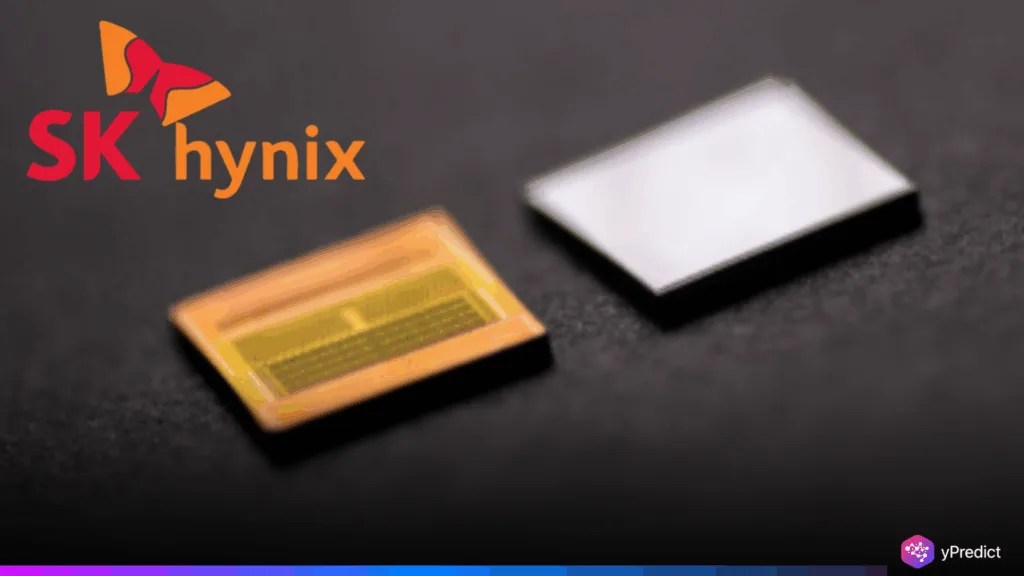
South Korea’s SK Hynix is confident that the AI memory market will expand at an impressive 30% annually until 2030. This forecast reflects the surge in demand for high-performance chips driven by the global adoption of artificial intelligence.
Choi Joon-yong, head of HBM business planning at SK Hynix, explained that demand from AI end users remains strong and is expected to climb even further. Major cloud companies like Amazon, Microsoft, and Google are already investing billions into AI infrastructure, and those spending projections are likely to rise. This direct connection between AI build-outs and high-bandwidth memory purchases is giving chipmakers strong confidence.
From Commodity DRAM to Next-Gen High-Bandwidth Memory
The memory sector once operated like a commodity industry, similar to oil or coal, but high-bandwidth memory has transformed it. Introduced in 2013, HBM stacks multiple chips vertically, saving space and cutting power use, making it perfect for heavy AI workloads.
SK Hynix projects the custom HBM market will reach tens of billions of dollars by 2030. With HBM4, the technology now includes a customer-specific base die that boosts performance and makes chips harder to replace. This customization gives SK Hynix, Samsung, and Micron a clear competitive advantage.
Customization Becomes a Growth Driver
Custom HBM is no longer limited to basic configurations. While large clients such as Nvidia already receive tailored solutions, smaller customers have traditionally relied on standard models. Choi noted that each client demands unique performance and power characteristics. SK Hynix plans to expand its customization services, making it a key growth engine for the AI memory market over the coming years.
Navigating Market Competition and Price Pressures
Despite SK Hynix’s optimism, the market faces competition. Samsung recently warned that current-generation HBM3E supply could outpace short-term demand, potentially affecting prices. However, Choi remains confident in SK Hynix’s ability to deliver competitive products that meet client needs. The company’s position as Nvidia’s main HBM supplier further strengthens its market influence.
Tariff Threats and Global Production Strategy
The recent announcement by U.S. President Donald Trump about a potential 100% tariff on semiconductor imports stirred industry concerns. The proposed tariff would target chips from countries without U.S. production facilities or commitments.
South Korea’s trade envoy confirmed that SK Hynix and Samsung would be exempt due to their investments in the United States. SK Hynix’s planned chip packaging plant and AI R&D facility in Indiana ensure that its products can reach American markets without the tariff impact.
Expanding Global Market Reach
South Korea’s chip exports to the United States totaled $10.7 billion last year accounting for 7.5% of total exports. Last year we also saw HBM exports to Taiwan also grow sharply for packaging making up 18% of HBM chip exports in 2024 and representing a 127% growth versus last year. This is encouraging news reflecting continued global demand for high-bandwidth memory and indicates SK Hynix appears to be a top contender in this rapidly evolving AI-centric technology world.
A Strong Year for SK Hynix in the Market
Investors are optimistic about SK Hynix’s outlook. On Monday, shares rose as much as 3.5% before closing 3.3% higher, which is higher than KOSPI’s gains. SK Hynix is up over 52% year-to-date, comparably Samsung share price is up 33.7% and Micron share price is up 41.3% for the same time period. The momentum demonstrates increasing confidence from investors in the AI memory market and leadership position being undertaken by SK Hynix in the market.
Looking Ahead to 2030 and Beyond
As AI adoption speeds up in all industries, demand for advanced memory solutions like custom HBM is poised to grow. SK Hynix’s emphasis on innovation, customer-specific customization, and investments in the U.S., will help SK Hynix emerge as a leader in this sector. As AI workloads grow in size and complexity, faster and more efficient memory will become a key enabling technology.






